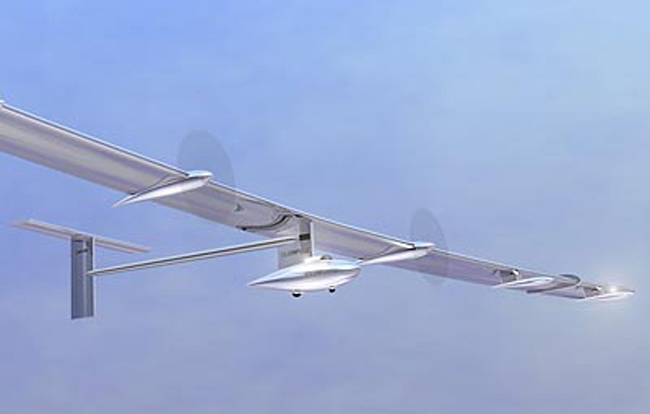Adventurer Plans to Circle Globe in Solar Powered Plane

A Swiss adventurer announced this week he plans to fly around the world in a solar powered airplane.
Bertrand Piccard is building the craft, called Solar Impluse, with the help of the European Space Agency (ESA). The purpose of his flight, scheduled for 2010, is to show what renewable energies and new technologies can do.
"Solar Impulse will promote the idea of a new aviation era using cleaner planes powered by the almost infinite energy of the Sun rather than the dirty, finite reserves of fossil fuels," Piccard said.
The space agency relies on the Sun to power its satellites, and has developed "efficient solar cells, intelligent energy management systems and resourceful storage systems," said Pierre Brisson, head of ESA?s Technology Transfer Program.
"We will make available this expertise, together with our advanced technologies, to support Piccard?s effort to demonstrate the potential of sustainable development," Brisson said.
In 1999, Piccard made the first non-stop around the world balloon-flight. His copilot for that flight, Brian Jones, will be one of Solar Impulse?s three pilots. When Solar Impulse makes its journey in 2010, Piccard and Andre Borschberg, Solar Impulse?s CEO, will join Jones in the cockpit.
"Although in its present design the craft will never be able to carry many passengers we believe that Solar Impulse can spark awareness about the technologies that can make sustainable development possible," Piccard said.
Sign up for the Live Science daily newsletter now
Get the world’s most fascinating discoveries delivered straight to your inbox.
The non-stop trip around the world will take place in five stages, each lasting three to five days. Piccard plans to fly West to East, 10 to 30 degrees north of the Equator, to take advantage of prevailing winds and sunlight.
The conceptual design for Solar Impulse was displayed in June at the Le Bourget air show. For the plane to be ready for its 2010 flight, Piccard and his crew must follow a tight schedule. Detailed designs and assembly of the plane must be complete by 2007, the first test flights – day and night – must be done by 2008, and multiple day solar flights have to be done by 2009.
In other projects, ESA has helped developed solar powered cars and even race cars that run on more environmentally friendly fuels.









